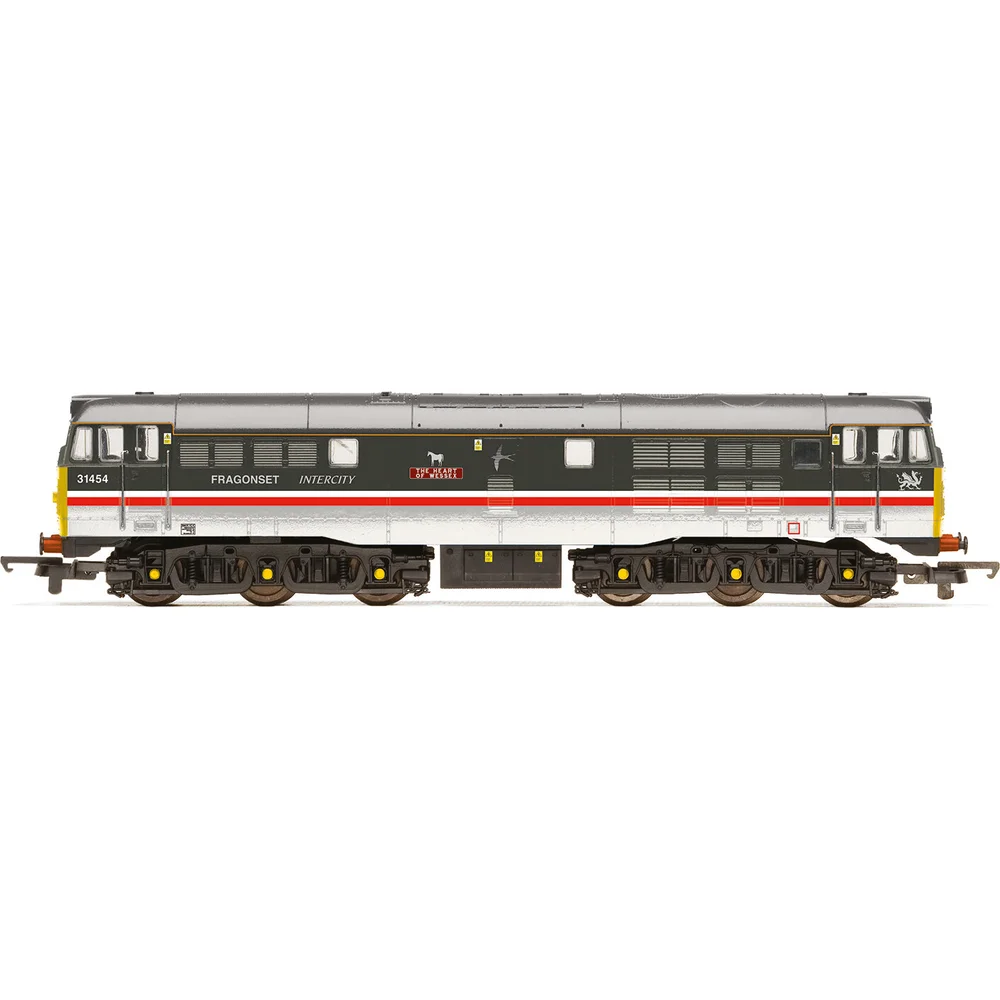Hornby R30196
British Rail Class 31 31454 The Heart of Wessex British Rail InterCity Swallow
Class & Prototype
- Class: British Rail Class 31
- Traction: Diesel
- Transmission: Electric
- Built: 1957-1962
- Total Built: 263
- Running Number: 31454
- Name: The Heart of Wessex
The Brush Type 2 represents one of British Railways' most remarkable transformation stories. Built by Brush Traction between 1957-1962, these 263 A1A-A1A diesel-electric locomotives initially struggled with unreliable Mirrlees engines, earning TOPS classification as Class 30. The comprehensive re-engining programme of 1964-1969 replaced the problematic powerplants with proven English Electric 12SVT engines, transforming them into dependable Class 31 locomotives that served for over 50 years. Originally nicknamed "Toffee Apples" (pilot batch) and "Skinheads" (early production), they evolved from operational liability to versatile workhorse, handling everything from branch line passenger services to main line freight duties. The class demonstrates how systematic engineering solutions can rescue unsuccessful designs, with the final locomotive withdrawn in 2017 after six decades of service. Today, 36 examples survive in preservation, whilst excellent ready-to-run models from Accurascale, Hornby, and Bachmann enable authentic recreation of both Class 30 and Class 31 configurations across multiple scales and eras.
Operator & Livery
- Operator: British Rail InterCity
- Livery: Swallow
- Era: 9 - Privatisation
British Rail InterCity was the premium express passenger brand that operated from 1966 to 1997, transforming long-distance rail travel across Britain. Initially launched as a marketing brand for high-speed services, InterCity became an autonomous business sector in 1982 under the sectorisation programme, operating profitable express services from London to Scotland, Wales, the West Country, and extensive cross-country routes.
The brand pioneered revolutionary rolling stock including the iconic InterCity 125 HST (High Speed Train) from 1976, which achieved 125mph operations on existing infrastructure, and the electric InterCity 225 sets from 1989, capable of 140mph but limited to 125mph in service. InterCity also developed the ground-breaking Advanced Passenger Train (APT) with tilting technology that influenced modern high-speed trains worldwide.
Distinguished by its evolving livery schemes - from Rail Blue and Grey through the sophisticated Executive livery with dark grey upper bodies and red stripes - InterCity became synonymous with quality, speed, and reliability. All day services featured buffet cars and the majority operated at 100mph or above, making British Rail one of the world's most intensive high-speed operators.
The brand was divided among multiple operators during railway privatisation in the 1990s, but its technical innovations, operational excellence, and commercial principles continue influencing modern rail services. InterCity remains hugely popular with railway modellers, with extensive ranges of locomotives and coaching stock available in all major scales from manufacturers like Hornby, Bachmann, and Heljan.
